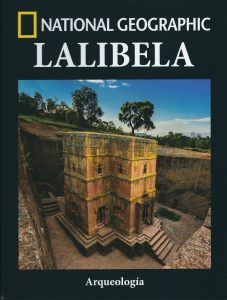
The Treaty of Wuchale (ውጫሌ in Amharic, Uccialli in Italian) was an agreement between the Ethiopian Empire and Italy signed in the city of the same name, in northern Ethiopia, on May 2, 1889. However, what seemed to be a simple treaty aimed at promoting trade between the two nations concealed the Italian intention of imposing a protectorate over Ethiopia. Once the Ethiopians discovered the ruse, the resulting unrest eventually led to the First Italo-Ethiopian War (1895–1896), which ended with the Italian defeat at the Battle of Adwa.
Menelik II (1844–1913) is regarded as the father of modern Ethiopia. A figure with both achievements and controversies, he managed to unify the country from his kingdom of Shewa and began Ethiopia’s expansion southwards, conquering Oromo territory and that of numerous other ethnic groups, ultimately shaping Ethiopia’s present-day borders. The southern conquest was essential to his political goals, as the wealth obtained allowed him to purchase arms, mainly from Italy and France, providing him with the military superiority he needed on the battlefield against his enemies, including Tekle Haymanot of Gojjam.
The Italians supported Menelik II with weapons, and he eventually became Emperor of Ethiopia on March 10, 1889, a day after the death of Yohannes IV at the hands of the Mahdist Sudanese. Menelik II ultimately recognized Italian possessions north of the Mareb River, which would become the colony of Eritrea. This decision permanently divided the Tigrayan people, who had previously been the main supporters of the former emperor and a significant counterbalance to the growing power of Shewa.
Menelik II was well aware of the importance of signing international treaties, especially within the context of late 19th-century imperialism. Thus, he did not hesitate to sign the Treaty of Uccialli with the Italian ambassador Pietro Antonelli on May 2, 1889, barely two months after ascending the throne. The treaty, consisting of just twenty articles, focused primarily on trade-related matters, such as the tariffs Ethiopian merchants would have to pay at the port of Massawa, the prohibition of slavery — something that would not be fully achieved until well into the 20th century — and the treatment of each country’s nationals in the event of litigation. The treaty was written in both Amharic and Italian. However, Antonelli introduced a substantial and deliberate change in Article XVII: in the Italian version, it stated that the Ethiopian emperor must use the Italian government to conduct diplomatic relations with other nations, while in the Amharic version it merely indicated that he could do so:
Art. 17. Sua Maestà il Re dei Re d’Etiopia consente di servirsi del Governo di Sua Maestà il Re d’Italia per tutte le trattazioni di affari che avesse con altre potenze o governi.
አንቀጽ 17 በአማርኛ “የኢትዮጵያ ንጉሰ ነገስት ከአውሮፓ ነገስታት ለሚፈልጉት ጉዳይ ሁሉ በኢጣሊያ መንግስት አጋዥነት መላላክ ይቻላቸዋል»
The Italian version of Article XVII effectively turned Ethiopia into an Italian protectorate. The Italians had no intention of negotiating honestly with the Ethiopians but sought instead to lay the groundwork for their imminent conquest. They quickly notified the other powers involved in the Scramble for Africa of the treaty’s signing. When the Ethiopians uncovered the deception in 1890, they opened the door to denouncing the treaty, which finally took place in 1893. Antonelli’s unscrupulous diplomacy ultimately provoked the First Italo-Ethiopian War, in which Italy expected an easy victory but suffered a decisive defeat at Adwa in 1896.
Bibliography
- Bahru, Z. (2002). A history of modern Ethiopia, 1855–1991 (2nd ed.). Ohio University Press.
- Lozano Alonso, M. (2022). Historia de Etiopía: Desde sus orígenes hasta la actualidad. Los Libros de la Catarata.
- Marcus, H. G. (1994). A history of Ethiopia. University of California Press.
- Pankhurst, R. (1997). The Ethiopian borderlands: Essays in regional history from ancient times to the end of the 18th century. The Red Sea Press.
- Rubenson, S. (1976). The survival of Ethiopian independence. Heinemann.
- Zewde, B. (1991). A history of modern Ethiopia, 1855–1974. James Currey.




 https://orcid.org/0000-0003-2855-3195
https://orcid.org/0000-0003-2855-3195
Deja una respuesta